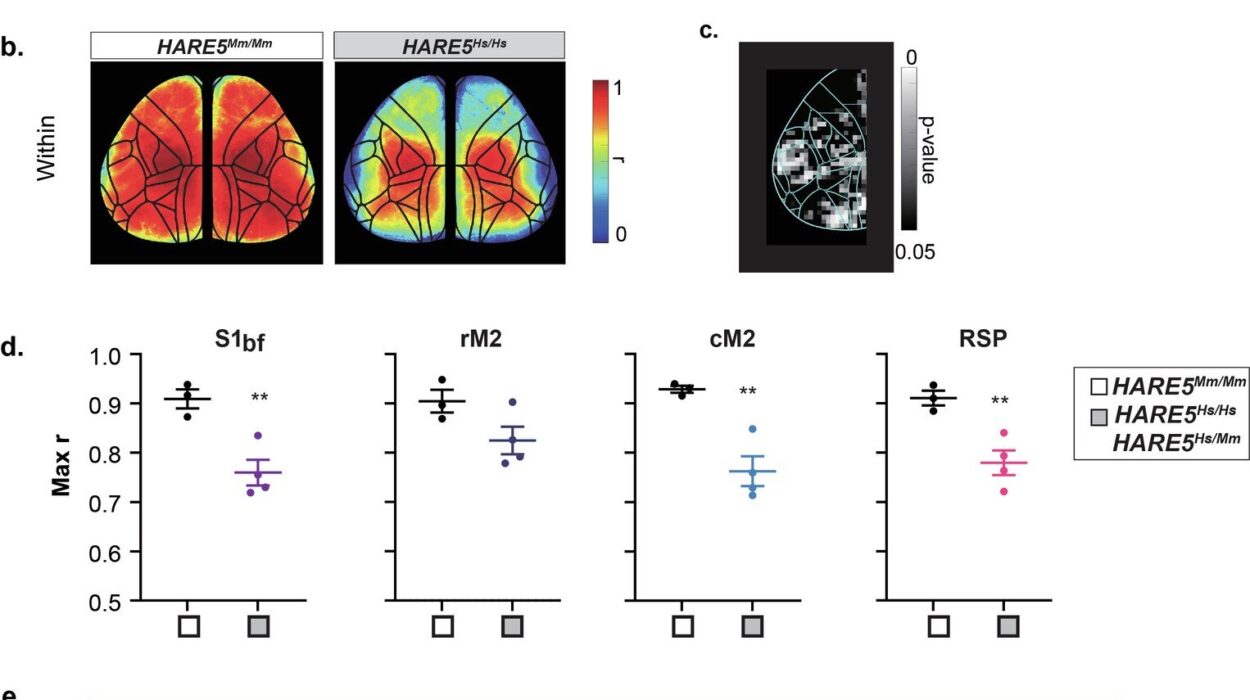In the world of dating, age is more than a number—it’s a statement. People often claim they’re searching for a partner within a certain age range. Men might say they prefer younger women. Women often state a preference for older, more mature men. But when these preferences are tested in real-world scenarios, such as blind dates, a surprising pattern begins to emerge. A groundbreaking study published in the Proceedings of the National Academy of Sciences challenges our traditional assumptions and highlights an intriguing truth: both men and women are slightly more attracted to younger partners—no matter what they’ve claimed before.
This discovery adds nuance to long-standing beliefs about age dynamics in romantic attraction. It turns out that preferences stated in surveys or dating profiles don’t always hold up under the gaze of real-life chemistry. The researchers, led by Professor Paul W. Eastwick of the University of California, Davis, set out to explore whether our self-proclaimed dating preferences match how we actually feel when we meet someone face-to-face.
Revisiting a Classic Assumption
The prevailing belief in both psychology and popular culture has been that men prefer younger women—often attributed to evolutionary theories about fertility—and women prefer older men, typically linked to resources and emotional maturity. This assumption is so common it has practically become dating dogma. It is also backed by demographic data from around the globe: in heterosexual marriages, men are on average three to four years older than their wives.
But while this may hold true in long-term pairings, what about the spark of initial attraction? That’s the puzzle Eastwick and his team aimed to solve, not with hypothetical questions or online swipes, but through actual blind dates between thousands of people seeking real romantic connections.
A Real-World Experiment in Romance
To capture genuine reactions in real time, the researchers partnered with Tawkify, a U.S.-based matchmaking service catering to individuals looking for long-term relationships. The dataset was impressive—6,262 participants representing a wide range of ages, incomes, and relationship histories. Participants agreed to go on blind dates arranged by professional matchmakers. After each encounter, they rated their enjoyment, their romantic interest, and whether they wanted to meet their date again.
Crucially, these individuals had previously stated their preferred age ranges for potential partners. Yet the matchmakers sometimes bent those rules, pairing people with dates slightly older than their stated limit when other traits aligned well. This created a perfect natural experiment: the researchers could now observe what happened when real-life chemistry clashed with preconceived ideas about age.
Youth Wins—Quietly But Consistently
The results revealed a subtle but consistent trend: younger partners were rated more favorably across the board. Whether judging physical attraction, overall impression, or willingness to go on a second date, both men and women gave higher marks to younger dates—even when those individuals were technically outside their preferred age ranges.
What made this even more striking was the symmetry between genders. While previous theories emphasized men’s bias for youth, this study found that women showed the same slight preference. Statistically, the effect was modest—about a 55% to 45% split in favor of younger partners—but its consistency across a large and diverse sample gives it weight.
This challenges the traditional narrative that only men seek youth while women prioritize age for security or experience. In blind date scenarios, where initial chemistry is paramount, both genders appear similarly attuned to age—specifically, a subtle leaning toward youth.
The Limits of Our Own Preferences
One might expect that people would be turned off if their date fell outside their stated age preferences. Surprisingly, this wasn’t the case. The researchers found no sudden drop in romantic interest when a date exceeded the preferred age range. In fact, ratings decreased only gradually as age increased—suggesting that stated preferences function more like soft guidelines than hard boundaries.
Even more revealing, when analyzing whether people were less likely to want a second date with someone older than their preferred age limit, there was no noticeable effect. Age, it seemed, didn’t disqualify a person from romantic interest. Instead, attraction appeared to be shaped by broader impressions, with age acting as a gentle influence rather than a dealbreaker.
Beyond Evolutionary Stereotypes
What explains the discrepancy between what people say they want and what they’re drawn to in real life? One possibility is that societal norms and long-standing narratives have influenced how people respond on surveys. Women, for instance, might say they prefer older men not because of genuine desire, but because they believe it’s expected—particularly in cultures where older men have traditionally held more status and stability.
However, when placed in a face-to-face situation where the pressure to conform is reduced, their actual preferences can emerge. The blind date format created just such an environment. Free from preconceptions and social scripts, participants were able to respond honestly to the person in front of them—and the data suggest that youth held a quiet allure.
A Skewed Dating Pool May Explain the Age Gap
If both men and women prefer younger partners, why do most relationships still involve older men and younger women? The answer may lie not in preference but in access. Social networks and matchmaking systems often introduce women to older men, based on assumptions about gender roles and maturity. This means the dating pool is already tilted toward traditional age pairings before anyone makes a choice.
In the Tawkify dataset, the average male date was 3.5 years older than the female participant. So even if both parties slightly preferred younger partners, the older-man-younger-woman pairing still emerged by default. As Eastwick noted, structural forces in the dating world may be responsible for maintaining these patterns, even if our hearts pull us in other directions.
Context Matters: The Evolution of Attraction
Another compelling theory raised by the researchers is that preferences may shift depending on the stage of a relationship. In early encounters—like blind dates or speed-dating events—people may be more attuned to charm, chemistry, and appearance. Youth could signal energy and vitality, making it a magnet for initial attraction.
But as relationships deepen, other factors—such as emotional intelligence, stability, or life goals—may rise in importance. It’s possible that women’s stated preference for older partners reflects long-term considerations, while the preference for youth reflects short-term romantic instinct. This dual-track model of attraction might explain why self-reports often differ from real-life choices.
Controlling for Confounding Factors
The researchers took care to rule out alternative explanations. Could income be skewing results, with wealthier men still holding an edge? Apparently not. The age-based attraction pattern held steady across income brackets. High-earning women were just as likely to prefer younger partners as lower-income women. Likewise, older rich men didn’t fare better in terms of romantic ratings than younger, less wealthy ones.
They even examined whether the preference for youth was tied to reproductive viability by focusing on women under 40. But even in this subgroup, the modest tilt toward younger men persisted. This suggests the effect isn’t simply biological but may stem from broader social or psychological forces.
Revisiting Past Research with Fresh Eyes
The findings align with an earlier, smaller study from 2005 that also found gender parity in age preferences in a speed-dating context. That study, however, was criticized for its limited scope and age range. The current research goes much further—incorporating a wider age span, a massive participant pool, and the unique advantages of blind dates to remove bias.
It’s an important evolution in our understanding of romantic attraction. For decades, dating research has relied heavily on surveys and digital data, which don’t always reflect the nuances of real human interaction. This study breaks new ground by prioritizing face-to-face experiences, revealing that initial attraction is far more flexible than we imagined.
What Does This Mean for the Future of Dating?
The implications are subtle but profound. If both men and women are drawn to younger partners but are funneled toward older-younger pairings by the structure of dating markets, it may be time to rethink how we approach matchmaking. Services that rely too heavily on demographic filters—like age ranges—may be missing opportunities for genuine connection.
For individuals, the lesson is clear: don’t let preconceived notions about age prevent you from exploring potential chemistry. Attraction is complex, often surprising, and rarely confined to a number on a profile. First impressions matter—and they may tell a different story than your list of ideal partner traits.
The Truth Beneath the Surface
At the end of the day, love doesn’t follow scripts. While age has long been seen as a predictor of compatibility, this research shows that it may be more of a suggestion than a rule. We may think we know what we want, but our hearts often have a quieter, more instinctive logic—one that only becomes clear when we sit down across from someone and see them for who they are.
And that’s the magic of real connection: it defies expectations, transcends statistics, and sometimes, just sometimes, makes us forget everything we thought we knew about what we’re looking for.






